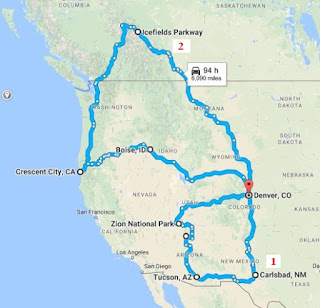COG does Mulligans Flat
Allowing for 2 members who were a little delayed, 20 members
of COG and 9 guests from the Bird Life Southern Highlands gathered at Mulligans
Flat for an exploration of the area around the Big Dam. Using the entrance off Eric Wright Street
saved us quite a step, although it did give an early experience of the dampness
of the area.
Looking at the times of breeding events listed in HANZAB, and attaching, metaphorically, weight to the missing tail, indicates this to be Feeding Young rather than Courtship Behaviour.
A male and female Scarlet Robin were simply moving in concert and thus remain as “Probable - Pair in suitable habitat”. Several migrants were heard and/or seen as moved on including White-throated and Western Gerygones; up to 3 Sacred Kingfishers (thanks for the photo Lindell):
Leaden Flycatcher and Olive-backed Oriole.
The big dam was replete with water: indeed it was as full as I have seen it for
many years.
In common with many other
water bodies in the area it was less than replete with water birds. We observed a family of Pacific Black Ducks,
including 7 very young ducklings, 2 Australian Wood Duck and singles of Pink-eared
Duck and Musk Duck. A few Eurasian Coots
and Little Pied Cormorants and a White-faced Heron completed the set.
We picked out way through the puddles to the small dam
nearby where the only Australasian Grebes of the day were seen. On the walk back the highlight was two Sacred
Kingfishers and two Tawny Frogmouths.
I am intrigued by the two birds apparently not being involved in nest-oriented activities at this time time of year. They are also not sitting huddled together, which is the usual posture for the pair I study (when they are on the same branch). I wonder if they have only recently formed a pair? I have since been told that the birds were initially together but moved apart when looked and talked about by the group. I haven't seen the species (either the ones at home or others the WW have come across) react like that in the past, but it would probably have been good for folk to have moved back when they appeared disturbed.
As well as the activities reported above other breeding
records were Sulphur-crested Cockatoo
and Red-rumped Parrot (both Probable--Visiting
Probable Nest site - the red-rumps in a tree in the middle of the dam); Noisy Miner (Confirmed -- feeding Young);
Australian Magpie (Confirmed – Nest with Young); Australian Raven (Confirmed—Nest
Building);
- that wasn't the nest builder just a convenient poser -White-winged Chough (Confirmed –Occupied Nest); Common Blackbird and Common Starling (both Confirmed--Carrying
Food).
In total we recorded 52 species of birds.
Moving on to other Natural History matters, some of the gums had a heavy lerp infestation.
I shall try to get an identification for this small insect near one of the scales.An authority on such micro-beasties has kindly advised:
Yes, the little yellow insect is an adult psyllid and so probably it developed under one of the lerps in your photo. The lerps (= covers, what you called "scales") look rather like those of Cardiaspina, but may be another genus. The lerps are produced from anal secretions of the insects. I assume that the tree was a eucalypt? Also the adult is very pale and so may be newly emerged from the cuticle of the last nymphal stage. There are several species of Cardiaspina. See this :
As well as the currently omni-present Australian Painted Lady butterflies many hoverflies were about, with this one doing its bit to ensure Ranunculus lappaceus continues.
As this Echidna kept stopping to burrow into the ground I presume it was also doing its bit to limit the continuation of some type of ants.Lizards were also available in the shape of a Shingleback
and a Bearded Dragon ...
Which bolted under its log and peered out at us.
I missed seeing the Brown Snake some of the group saw beside the track. I also missed the Bettong which a few lucky folk saw quite early in the walk.
After the formal part of the walk was completed I escorted our guests on a visit to the Forde drain to check for crakes and rails. The less common species were not available but we did record some very young fluffball Australasian Swamphen chicks.
The final visit was to Shepherds Lookout . As expected, the Murrumbidgee had a good amount of water.
As hoped, the area had a good array of raptors. Almost as soon as we got out of the cars a Peregrine Falcon came by and stooped spectacularly at something out of our sight. From the Lookout we added Wedge-tailed Eagle. Whistling Kite and Nankeen Kestrel.



















Comments